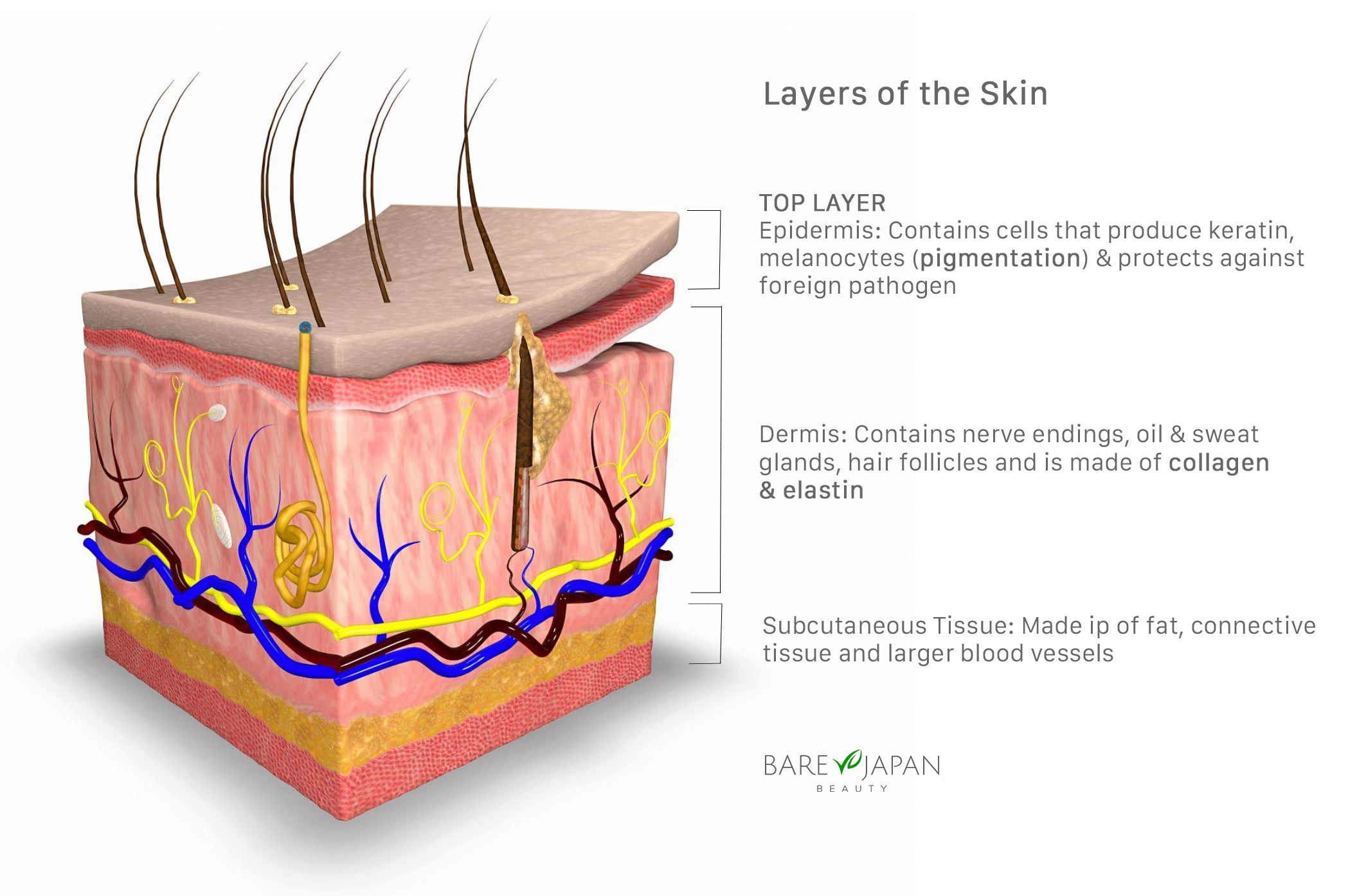Behind the scenes of our skincare needs
Our skin makes up to approximately 15% of our body weight and is the largest organ of the body. It is one of the most important organs of the human biology. Learning its structure, not only gives us a better understanding of its anatomy and physiology, but also helps us make better and more informed decisions when taking care and maintaining its health.
The skin performs unique and critical functions in the human body and makes up the integumentary system. The three main functions of the skin are;
- protect us from harmful elements such as sun rays, germs and toxic substances
- to regulate our body temperature through the production of sweat & evaporation
- our sense of touch such as cold, hot, vibrations, pain, etc.

Epidermis
The epidermis consists of the outermost layer of the skin which is visible to us. It plays the most important role in protecting our body against foreign pathogens and UV radiation.
“Desquamation” is the process of skin renewal – where dead skin cells is being replaced with new skin cells.
Skincare tip: Regularly exfoliating or using peeling products help remove dead skin cells and encourages the production of new skin cells. Exfoliating two to three times a week may help reduce bacteria on the skin and clean out clogged pores.
The epidermis also produces melanin, which gives colour to the skin, hair and eyes. However, an excess production of melanin on certain areas causes hyperpigmentation or dark spots. This is mainly caused by sun exposure and tend to be small, dark patches of skin.
Skincare tip: Always remember to apply sunscreen before leaving home. Sunscreen helps to reflect or scatter light away from the skin. Certain sunscreen absorbs UV rays, protecting our skin from getting damaged.
Dermis
The dermis is the middle layer of the skin. It contains hair roots, nerve endings, blood vessels and sweat glands that regulate body temperature. It also gives skin structure and elasticity and is primarily made up of fibres of collagen and elastin.

Collagen and elastin play major roles in providing structure, elasticity & strength in skin. A healthy amount of collagen keeps the skin moist, soft and firm. Elastin on the other hand helps skin return to its original position after stretching or contracting. This keeps our skin looking smooth and youthful. As we age, the production of collagen and elastin starts decreasing and breaking down. Exposure to UV rays also causes elastin to stiffen and discourage the ability of our skin to bounce back. Depletion of these proteins leads to signs of aging such as sagging, wrinkles and fine lines.
The sebaceous gland in the dermis is responsible for secreting an oily substance called sebum. A healthy production of sebum keeps our skin soft and smooth. However, too much sebum leads to oily skin, clogged pores and acne.

Subcutaneous Layer
The subcutaneous tissue is the lowest layer of the integumentary system. Also called the hypodermis or panniculus, this layer is primarily made up of fatty tissue called adipose tissue.
Its main purpose is to store fat. The dermis is connected to our muscles and bones through the hypodermis.
Summary
Here at Bare Japan, we hope this article has helped you understand the basics of what goes on “behind the scenes” of your skin care concerns. We hope it encourages you to make better decisions when choosing the right products for a healthier, younger & firmer skin!
